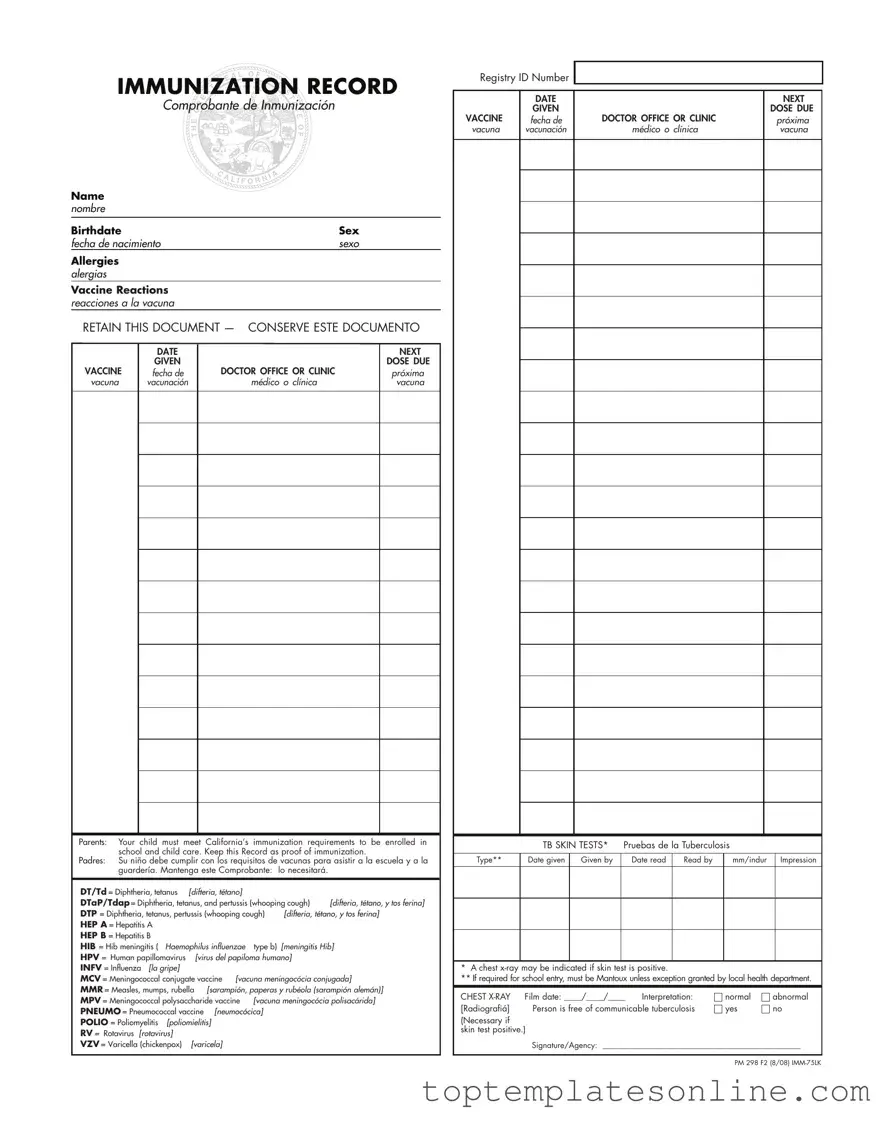The Immunization Record form serves as a crucial document for parents and guardians, ensuring that children meet the necessary immunization requirements for school and child care enrollment in California. This form includes essential details such as the child’s name, birthdate, and sex, along with a comprehensive list of vaccines administered. It also highlights any allergies or vaccine reactions, which are important for healthcare providers to note. Parents should pay special attention to the sections detailing the dates of vaccines given and the due dates for upcoming doses, as maintaining an up-to-date record is vital for compliance. Additionally, the form contains specific vaccine abbreviations and their full names, ranging from DTaP for diphtheria, tetanus, and pertussis to MMR for measles, mumps, and rubella. A section for tuberculosis skin tests is also included, emphasizing the importance of these tests in certain school requirements. Keeping this document safe is essential, as it serves as proof of immunization and may be required for various school and health-related activities.
